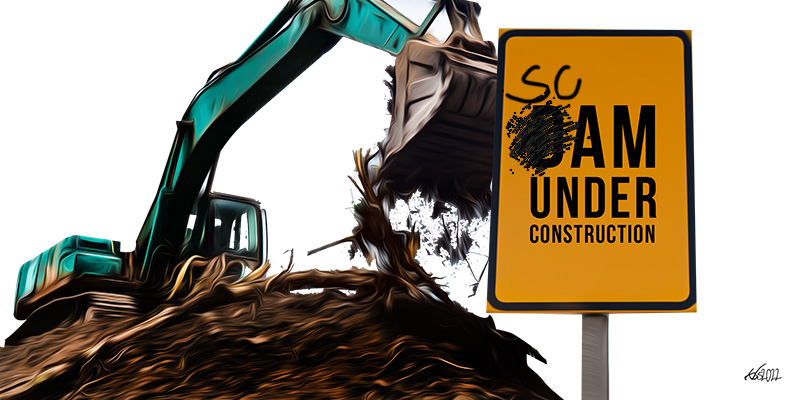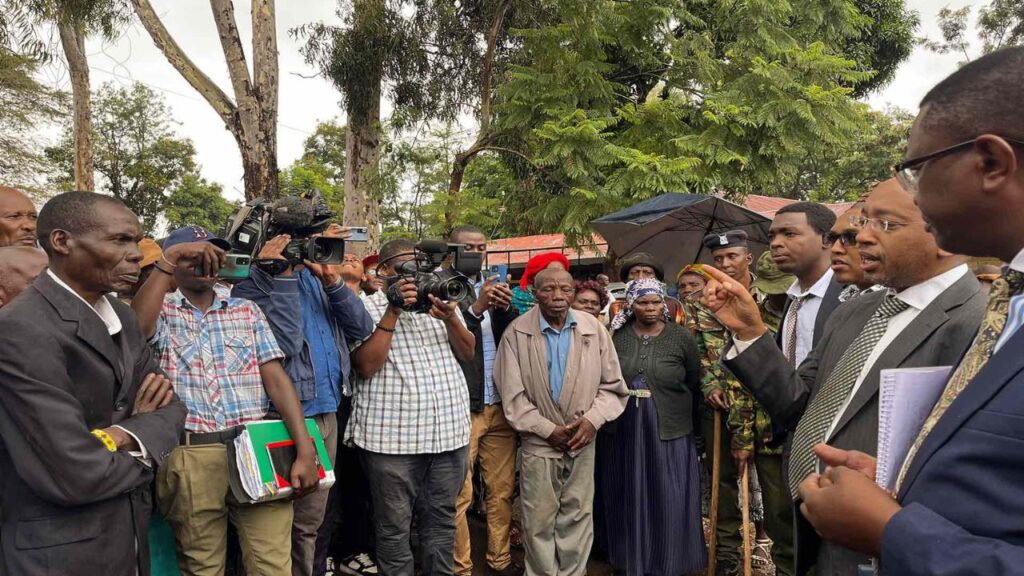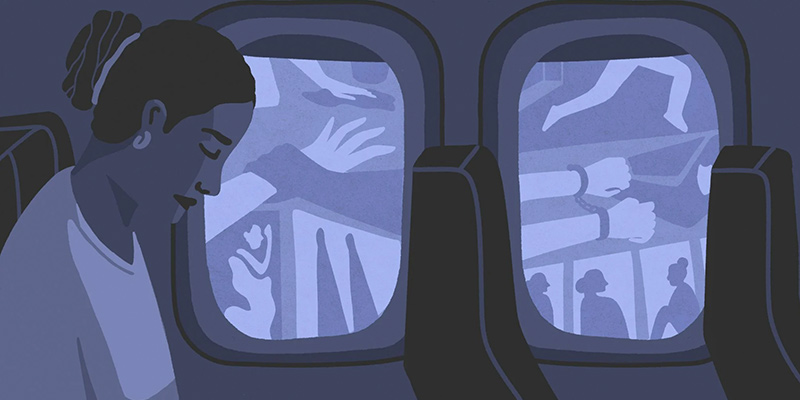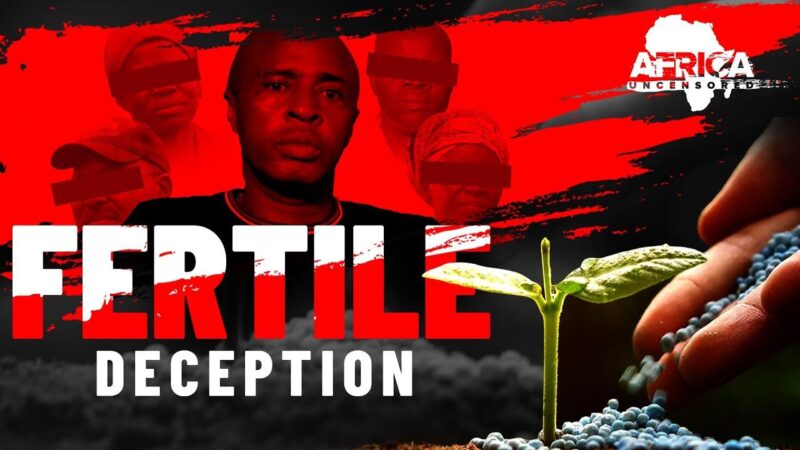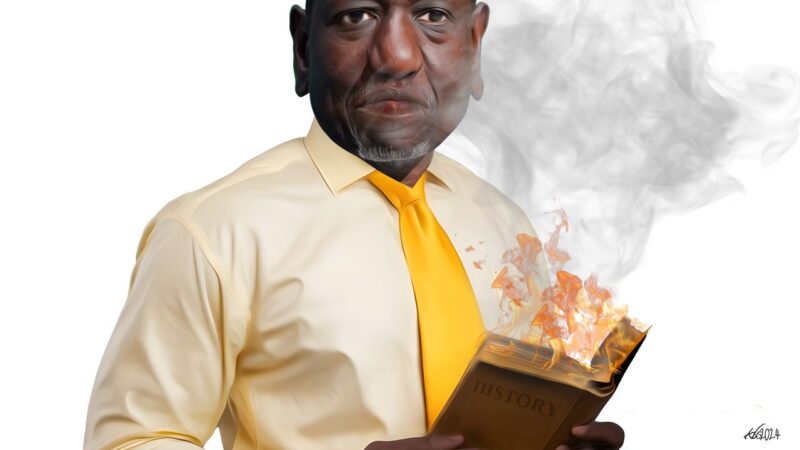In a November 1983 report of a World Bank appraisal mission to Kenya to look into the Kiambere hydroelectric dam on the Tana River, then under construction, there is a small footnote about other Kenyan rivers with hydroelectric potential. One of those identified is the Arror River, a major tributary of the Kerio River in the North Rift. Arror is a Marakwet word that means “the river that flows and makes a loud sound” and, in the last few years, the river has more than lived up to its billing. It is the site of one of two phantom dam projects (the other is on the Kerio River near Kimwarer village) that have been used to siphon billions of shillings from public coffers. Even for a government with a well-earned reputation for thievery, the Arror-Kimwarer scam is a breath-taking and unparalleled display of corruption.
The idea of building a dam on the Arror River dates back to 1986. According to the Nation, at the time, Arror Dam was projected to cost KSh414 million, it never materialised but due to lack of funds. Answering a question in Parliament in February 2009, then Assistant Minister for Water and Irrigation, Mwangi Kiunjuri said that the Kerio Valley Development Authority (KVDA) commissioned an Italian firm to carry out a feasibility study for “dams for irrigation and hydropower generation in Arror River Basin” that “indicated the suitability of the project to generate hydropower and develop a potential area of about 6,460 acres of irrigation”. According to Kiunjuri, the project would add 70 megawatts to the national grid. However, according to figures cited by Kiunjuri, in the 23 years since the project was first proposed, the cost of the project had increased 42-fold, ballooning to Kshs16.8 billion which, he said, exceeded the entire allocation to his ministry.
Kiunjuri was answering a question from then Member of Parliament for Marakwet West, Boaz Kipchumba Kaino, about “plans to construct two dams for irrigation and hydropower generation in Arror and Chesuman Locations in Marakwet District . . . which were factored in the 1995-1996 development plan”. According to Kaino, “many studies have been carried out on the same project. Each study has come up with the same 70 megawatts potential.”
In September 2009, Kaino again put Kiunjuri on the spot regarding the two dams. While reiterating his answer from seven months before, the latter added that there had been a request in 1994 to build 11 small dams in the Kerio Valley, and that “the only attempt that has ever been made in that area to have a dam for irrigation and production of hydropower was in 1986,” an apparent reference to the Arror dam.
Interestingly, in these exchanges, there was no mention of a dam at Kimwarer, only at Chesuman, nearly 90 kilometres to the north. The plan for a multipurpose dam in Kimwarer appears to have been mooted sometime after the Arror dam. It is listed in the National Water Masterplan 1992 as one of 28 multipurpose dams for hydropower, irrigation, domestic water supply and flood protection and was said to be at the pre-feasibility level in a 2003 report for the World Bank, alongside “Sererwa Dam located on the Arror river”.
A decade later, when the National Water Masterplan 1992 was updated to the National Water Master Plan 2030, Kimwarer was listed together with Arror as one of six multipurpose dam projects in the Rift Valley Catchment Area “designed for hydropower and irrigation. According to information from the KVDA, the hydropower component of the Kimwarer Dam would have “an installed capacity of 20 MW”. By 2012, a pre-feasibility study had apparently been completed. The KVDA published the Request for Proposal for the new Arror project (which included Kimwarer in this latest version) in December 2014.
In 2015, there was a new commitment to the dam project from the Italian government. Then prime minister Matteo Renzi visited Kenya in July. It was his second trip to the continent in two years. Several European countries, including Italy, were indeed keen on strengthening their relationships in Africa at that time. The main International challenges were fighting global terrorism and curbing migration. Renzi was among the initiators of the Khartoum and Rabat Processes. Launched in Rome the previous year, the Khartoum Process was a platform for political cooperation amongst the countries along the migration route between the Horn of Africa and Europe. The European Union launched the EU Trust Fund for Africa in November 2015 in Malta, a tool “to deliver an integrated and coordinated response to the diverse causes of instability, irregular migration and forced displacement”. Renzi travelled to Ethiopia and Kenya in this context. (Renzi’s meeting with president Uhuru Kenyatta made the headlines less for its content than for a picture shared by The Star in which Renzi seemed to be wearing a bulletproof vest under his blazer.)
“During the visit of Italian Prime Minister Matteo Renzi to Kenya, SACE, Intesa Sanpaolo and BNP Paribas announced the finalization of a €306 million loan to finance the Itare Dam project, built by CMC-Ravenna on behalf of the Kenyan National Treasury”, the SACE press office reported the day after the visit of the Italian Export Credit Agency. Intesa Sanpaolo is among the biggest Italian banks while CMC, the Italian construction company awarded the project, would feature prominently in the Kenyan dams saga. CMC signed the contract in May 2015. Itare was the very first dam awarded to the Italians in 2014 but, like the others, the project has never been concluded. It is listed in the Kenya Vision 2030 project, an ambitious development plan that has been ongoing since 2008.
After Itare, public invitations to tender were issued for Arror and Kimwarer, dam projects that by July 2015 appeared to present a unique opportunity for Italian companies to invest in. Italy has had an historical presence in Kenya since 1966 when the San Marco space launch platform was built near Malindi, a town now dubbed Little Italy. San Marco is still used by the Italian Space Agency to launch satellites into space. Italians soon followed, making investments along the Malindi coastline, exploiting Kenya’s natural resources and gaining privileged access to the country in the process. These long-lasting ties did not prevent the failure of the dam projects, however, which turned out to be a political game rather than a development opportunity.
Itare was the very first dam awarded to the Italians in 2014 but, like the others, the project has never been concluded.
Yet when cancelling the Kimwarer dam project in 2019, the government, through a statement from State House, claimed that the dam, which by then was to cost KSh22.2 billion, was “neither technically nor financially viable”. The statement further said that a technical committee “formed following the discovery of irregularities and improprieties” surrounding the Kimwarer and Arror Dams, had established that no current reliable feasibility study had been conducted on the former. “The only feasibility study carried out on a similar project twenty-eight (28) years ago had revealed a geological fault across the 800 acre project area, which would have negative structural effects on the proposed dam”. If a feasibility study had shown this in 1991, why then was the dam included in the National Water Master Plan formulated a year later and again when the plan was updated over a decade later? And what accounts for the over 68-fold increase in the cost of the Arror project to KSh28.3 billion in 2009 from an initial KSh414 million in 1986? In fact, according to former Prime Minister Raila Odinga, “Kimwarer and Arror dams were planned for during Mwai Kibaki’s government and the contract awarded to an Iranian company, which estimated the entire cost at Sh5 billion, now the figure has escalated to KSh63 billion”.
To get to grips with the saga surrounding the construction of the controversial dams, in late 2020 Dauti Kahura travelled to Elgeyo Marakwet County in the greater Rift Valley region, where the twin dams were to be built. It is one of the 20 smallest of Kenya’s 47 counties, with an area of 3,050 square kilometres and a population of slightly less than half a million people, according to the 2019 population census.
Agriculture is the county’s economic mainstay. Potatoes are grown in the highlands while in the flat middle belt, maize plantations dot the landscape. Fruits such as avocadoes, mangoes, pawpaw and grains such as green grams, sorghum and millet do very well in the Kerio Valley. The topography, climate and availability of water make the area ideal for the production of these crops.
The county’s biggest town is the world-famous Iten, renowned for producing elite athletes and world-class marathoners. But other than a huge banner announcing “You Are Now Entering Iten Home of World Class Athletes”, there is little else about the bustling little rural town that tells you anything about its great sons and daughters.
Leaving Eldoret in neighbouring Uasin Gishu headed north-east to Iten, one’s attention is drawn to the rolling plateau of hectares upon hectares of maize plantations that disappear into the horizon. It is harvest time, the morning sun is out and the ready-to-be-harvested maize stalks are arranged like igloos. Massey Fergusson and John Deer tractors and combine harvesters dot the landscape, an indication that maize farming is serious business here.
Speeding across the undulating flatland one comes across scores of lithe, mostly male, runners tackling the 38 kilometres between Iten and Eldoret, a morning ritual for runners who hope to one day break world marathon records. They are joined by a band of European athletes who are persuaded that by running alongside the amateur athletes, they will perhaps crack the secret to the Kenyans’ success in long-distance races.
The county’s biggest town is the world-famous Iten, renowned for producing elite athletes and world-class marathoners.
From Iten to Kapsowar is a distance of 46 kilometres, and the higher you climb the cooler it gets. Many of the matatus here are Probox saloon vehicles and although people are not packed inside them like sardines, the cars are driven at terrific speeds by chatty, confident drivers. Nine kilometres from Cheptongei, the road starts winding upwards as you approach Kapsowar trading centre.
At Kapsowar, the boda boda (motorcycle taxi) rider Kahura hires to take him to the bottom of the valley, where the Arror dam was meant to be built, says that few outsiders have shown interest in going down into the area. The dam was to be built in Marakwet West constituency between Hossen and Kipsaiya, two facing ridges that share a border on the valley floor. The rider says that KVDA officials had come here to persuade the people to agree to the proposal to build the dam. According to a report in the Business Daily newspaper, the officials had promised that locals would be compensated with up to five times as much land as they would give up for the two dams. KSh6 billion was promised as compensation to the more than 900 families that would be affected, although to date that too is yet to materialize.
“No dam was built,” says Salome Chebet, a local resident. “It was a huge con from our leaders. The only thing they put up was a container office, which served as a liaison office.” It has since been carted away. “With hindsight, it’s a good thing the dam was never built,” she says. “We no longer desire it because it was all a political con game from people who we elected and who claim to represent our interests.” Chebet says KVDA officials and elected representatives, including Marakwet West Member of Parliament William Kisang, Senator Kipchumba Murkomen and Governor Alex Tunoi Tolgos, had frequented Kapsowar to sell the imaginary dam to the people. In parliament in 2016, the then Senate Majority Leader, Murkomen had declared that, “under the Arror and Kimwarer Projects, it is expected that over 10,000 acres of land in Kerio valley will be irrigated. Through the project, there will be generation of 80 megawatts of hydropower as an enabler to manufacturing, provision of clean water for 80,000 households and livestock; and support to the Arror and Kimwarer rivers catchments’ conservation initiatives”.
The boda boda rider agrees with Chebet. “It is true. For a while, there was a flurry of activities at Kapsowar. The KVDA officials accompanied by these politicians would descend here hoping to convince the people of the viability of the said dam. But these were thugs, ready to fill their pockets.”
Indeed, the KVDA held several barazas where they extolled the virtues of the dam; how it would generate electricity, how the local people living up the valley—that has rich soils for growing fruits such as avocadoes, mangoes and pawpaw—would benefit. Strangely, some of the people Kahura spoke to had not heard about the compensation arrangements. “There is one thing they never addressed, even when pressed to do so: the compensation issue. How would they compensate the people? How much money were we talking about here? Where was the land where they would relocate the people as the dam was ostensibly being built? How suitable and viable was it in comparison to our land?” says the rider.
“You can imagine our consternation when we learnt that some of the money meant for the dam went into buying beddings and towels for a hotel,” says an angry Chebet. She is referring to a February 2019 claim by the Director of Criminal Investigations, George Kinoti, that a company had been awarded a tender to supply “towels worth Sh20 million, while another delivered tiles and carpets”. According to his investigators, over a hundred companies were awarded tenders to supply items that had little to do with the actual dam construction, including food and wine worth KSh17 million, bedsheets and airline tickets worth Ksh1.5 million. The scale of the pay-outs to individuals and companies for the supply of goods and services for the fictitious construction is astounding, amounting to KSh21 billion according to reporting by Citizen TV.
“All these were white lies,” observes Arap Cherop who has lived in Kaptoiyoi since 1983. Residents of Kaptoiyoi village, which is situated on the floor of the valley between Hossen and Kipsaiya, would have been the most affected because they would all have had to be relocated. “But where were we being relocated to?” he asks.
“The KVDA officials, sometimes led by their boss David Kimaiyo, on several occasions came here to apparently give us the benefits of the coming dam, which according to them, included irrigation and water for domestic use, but we also asked them questions and they couldn’t answer many of them,” he says.
According to residents, no compensation was ever paid, despite the disruptions to planting seasons between 2018 and 2020. Those Kahura spoke to said that after news of the scandal broke, the barazas that the KVDA used to hold all dwindled away.
Over a hundred companies were awarded tenders to supply items that had little to do with the actual dam construction.
Asked about the prospects for justice, the rider replies, “You’ve seen and heard for yourself. Money was eaten by our leaders, helped by the dubious Italians. But that’s the nature of our politics—very ethicized. It is our leaders who have short-changed their own people, but you know what? We can’t be counted on to expose them. It would be akin to exposing our dirty linen in public, so we’ll suffer in silence and when the elections come in 2022, we’ll be swept in a wave of euphoria, be reminded that we’re all Kalenjin and that one of our sons will be gunning for the ultimate seat. Can we surely afford to embarrass him at that critical juncture, everything else notwithstanding?”
The following day Kahura visited the site of the proposed Kimwarer dam, another phantom project, now cancelled, without anything to show for it on the ground. According to the Kenyan prosecutors, the dam was never approved by the Treasury. In 2019, CMC signed a bankruptcy agreement with the Court of Ravenna, the city on the Romagna coastline where CMC is headquartered. The bankruptcy agreement is a repayment plan that aims to avoid the closure of the company and save the jobs of its 5,454 employees. The COVID-19 pandemic has slowed down CMC’s activities and consequently, the company’s income for the past two years has been lower than expected. According to its 2020 balance sheet, CMC went into arbitration at the International Chamber of Commerce claiming damages of US$124 million from the KVDA, which was later replaced by the Kenyan State. “The arbitration is in the initial phase and the presumed verdict will be in either the last trimester of 2022 or the first trimester of 2023”, the balance sheet reads. According to a note shared with journalists from the CMC press office back in 2019, between 28th December 2017 and 9th November 2018 the KVDA made two advance payments for Arror and Kimwarer totalling over US$66 million.
Kimwarer is located in Keiyo South constituency, 60 kilometres from Eldoret town on the Eldama Ravine Road. Unlike the Eldoret-Iten Road, the Eldama Ravine Road is in dire need of repair. The gaping potholes and washed away sections of the road meant the trip took twice as long as the journey from Eldoret to Kapsowar, which is 84 kilometres. The road takes you to HZ centre, a trading centre named after the late “Total Man” and powerful politician Nicholas Biwott’s construction company, HZ Construction and Engineering Company Limited. If the dam had been built, it would have swallowed up the unassuming little centre.
KVDA made two advance payments for Arror and Kimwarer totalling over US$66 million.
As opposed to Kapsaiya area, Kimwarer is less settled, so fewer people would have been displaced. Still, it is a semi-forested area, full of vegetation and lush greenery. It holds the community grazing area, where the local people leave their cattle to graze freely for weeks on end.
The initial descent into the valley is not as steep as when heading to the site of the Arror dam and it is possible to drive part of the way through the wet tropical-like vegetation, leaving the car to cut through the dense vegetation accentuated by tall indigenous trees. The two guides accompanying Kahura from HZ centre tell him they grew up grazing cattle in the area and know the geography of Kimwarer like the backs of their hands.
Once on the valley floor, gazing up towards HZ centre and towards the Eldama Ravine Road, the guides say that had the dam been built, the entire area would have been shorn off vegetation and anybody living there would have had to leave. “But as it is, the only evidence that anything had happened here is drilling,” says one of them. Only the gaping holes remain. Other large pits had been dug for soil testing though nothing was ever heard of the results. Many are now covered by vegetation or filled by the local people to avoid their cows falling into them.
Silas Kiplagat from Tulwobei village, the homesteads nearest to the site of the proposed dam, says the people are no longer interested in it, “because as you’ve seen for yourself, this was one huge scam. Our politicians all took us for a ride. It was all so absurd. The former MP, Jackson Kiptanui, Senator Murkomen and Governor Tolgos all came here to persuade us to support the project.”
KVDA officials, “who we were told would be in charge of the project,” had visited. “They held a meeting at the HZ centre social hall and enumerated the advantages of the dam when finished,” says Kiplagat. Other government officials whom Kiplagat says showed up were National Land Commission officials who also met the locals at the social hall and told them they were seeking their participation, insofar as the dam’s project was concerned.
“Then all visits stopped suddenly,” says Vincent Kiprop, also from Tulwobei village, “and the ensuing scandal startled the people. How is it that your own leaders can conspire to rip you off?” Kiprop asks. The residents are very angry with their leaders. “But hey, what are our options?” he shrugs.
“The former MP, Jackson Kiptanui, Senator Murkomen and Governor Tolgos all came here to persuade us to support the project.”
Kahura returns to Iten town where he meets with Kiptarus Kipkoros, a local journalist who is well acquainted with the dams’ saga. “The ‘dams project’ was meant to finance the 2022 election campaigns in the north Rift Valley region and especially in Elgeyo Marakwet,” says Kipkoros. He blames the media for the misinformation and confusion surrounding the two dams. “KVDA MD David Kimosop would hire a special helicopter to ferry journalists from Nairobi to the supposed dam sites. But you and I know their intention was not to establish whether the sites existed, report on the scandal or even investigate the story — not as long as the brown envelopes were aplenty.”
Kipkoros alleges that Kimosop would take the journalists on an aerial tour of Elgeyo Marakwet County, circle the areas around the two dams then return to Eldoret for a sumptuous meal before sending them back to Wilson Airport each with a brown envelope in hand. “Therefore, the politicians [read the MP, Senator and Governor] and the journalists helped conceal the true extent of the mega-dams scandal.” Journalists became part of the people who helped siphon the state’s money, says Kipkoros.
Before the scandal broke, weekends in Elgeyo Marakwet County were awash with choppers flying into the area. “Here in Iten they would drop at St Patrick Iten School grounds, at the market field, or anywhere where there is a landing field,” says Kipkoros. “Afterwards, the whizzing of the choppers in the air over the weekends suddenly ceased. It is very painful to watch elected leaders robbing their own people,” says the journalist. “The politicians used the money for self-aggrandisement,” he says, adding that
The journalist claims that the politicians and top KVDA officials used the cash to fund extravagant lifestyles, which astonished the people of the small, poor county of Elgeyo Marakwet. “The politicians inundated the county with choppers loaded with money every weekend, dishing it out to their supporters and at hurriedly set-up fundraisers.”
Before the scandal broke, weekends in Elgeyo Marakwet County were awash with choppers flying into the area.
Longrock Engineering Limited was named as one of the companies that allegedly received part of the money for the dams. The company was allegedly paid KSh6.2 million to supply furniture and provide transport services. “Now, Longrock is a corruption of the name Kaplongorok, a family name that hails from Kipsait in Kapsowar,” said Kipkoros. According to an investigation published by Africa Uncensored, there are five companies with “Longrock” in their names that were suppliers for the construction of the dams, all of whose directors or shareholders are directly linked to the KVDA and more specifically to board member Dinah Chelanga. “You can see for yourself the extent to which the money was distributed to friends, loyal supporters and relatives,” says Kipkoros.
The journalist says the politicians and the KVDA officials bought their girlfriends and wives brand new Toyota sedans and SUVS. “Some even acquired new wives on account of that money.”
However, even the journalist sees little prospect for real justice and accountability in the ongoing prosecutions over the scams. “The war on corruption will not be won by engaging in politics of deceit and subterfuge,” he says. What Uhuru is doing is not fighting corruption, but fighting [Deputy President William] Ruto and that’s why the people will just be angry for a while but quickly revert to type — that is ethnic politics.”

